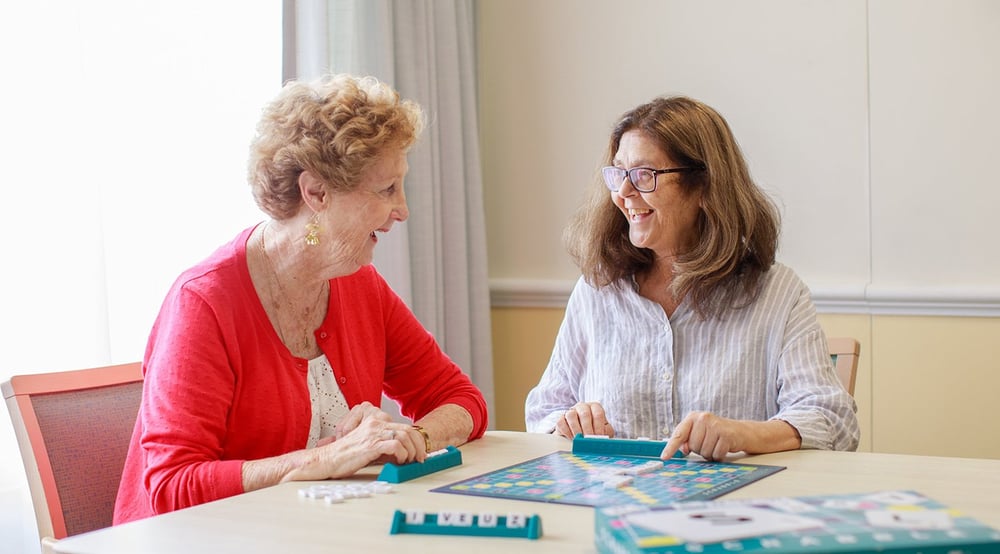Green House homes aren’t “home-like” – they’re a real home
19 August, 2022 2 min read

Initially developed in the US in the 1990s, the Green House model infuses person-centred practices from the ground up in both design and operational mindsets. The Green House Project (GHP) is a non-profit organisation that partners with providers across the US, both for-profit and non-profit, that seek to adopt the Green House model in their communities.
“The Green House Project rejects the prevailing wisdom that eldercare services must be provided in institutions for efficiency and scale,” says Susan Ryan, senior director of GHP.
“On Green House campuses, elders live in small homes of no more than 12 residents. Each elder has a private bedroom and bathroom, and the homes feature an open communal kitchen, a shared living room with a hearth and fireplace, and access to secure outdoor spaces.”
Susan describes the Green House difference as the sum of its core values of Real Home, Meaningful Life, and Empowered Staff.
“The staff are empowered to incorporate elders’ needs and wants into day-to-day life at the home, and they work with elders and their families to create an environment where they can explore their passions, maintain strong connections with friends and family, and pursue the hobbies and activities that bring them joy and fulfilment.”
GHP’s philosophy of care isn’t just resident-centred; it’s resident-driven. Staff incorporate resident preferences into every part of the day at a Green House home, from the time that each resident likes to wake up, to the types of food they prefer, to the activities and interests they’d like to pursue.
GHP believes that every older person, no matter their physical and cognitive abilities, deserves to live on their own terms – and that they should not have to give up autonomy, just because they require additional services and supports.
This applies to all residents including those living with dementia - GHP firmly rejects the idea that they should be segregated into locked units or wards, or that dementia behaviours are problems to be managed or treated with powerful antipsychotic drugs.
These philosophies form the backbone of GHP’s internally developed Best Life dementia care program, which emphasises each person’s retained abilities, while also embracing what both HammondCare and GHP describe as the dignity of risk – the right of all people, including those living with dementia, to choose to take acceptable risks to pursue the activities that provide them joy, fulfilment, and meaning.
During the pandemic The Green House model received unprecedented levels of media coverage because it reported about 50 per cent fewer COVID-19 infections than the national US average, and about two-thirds fewer deaths. This was a direct result of both the physical design of the homes and the staffing model: private rooms and bathrooms eliminate a key vector of viral spread, while consistent staffing assignments and lower worker turnover reduce the total number of people entering and exiting a home, a major driver of outbreak risk.
But Green House design and care principles have COVID benefits beyond infection control. The communal outdoor areas allowed for physically distanced activities and visits, while the focus on resident engagement and fulfilment helped to cut down on feelings of isolation and helplessness – factors that are just as important for elder health and wellbeing as physical health.

Susan Ryan (left) joined the panel ‘COVID and the cottage model of care’ at the 2022 International Dementia Conference: Brave New World. Be the first to find out about speakers like Susan at the upcoming IDC2024 by signing up to our mailing list.
Update
#IDC2024 was an incredible event, filled with the stories and expertise of those doing battle with dementia IN THE ARENA.
Now we're planning IDC2026!
Be the first to know about our date, venue, speakers and topics
PLUS
stay in the loop with all the latest from The Dementia Centre. Just fill out the form below!